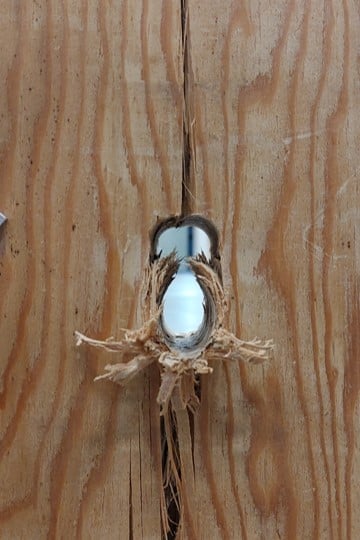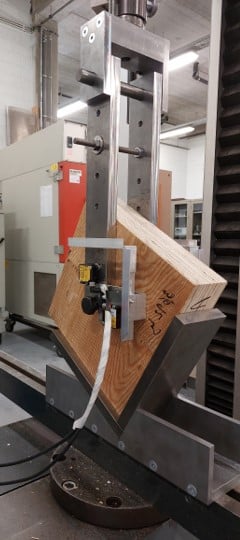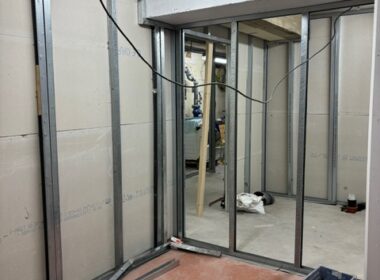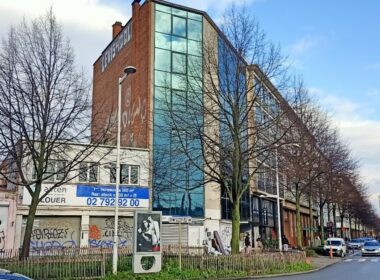Research into moment-resisting joints in timber construction
How to make timber construction more sustainable and circular? Researchers and engineers have been considering this complex question for years. The answer lies not only in knowledge of materials and building standards. You have to dare to experiment, model and be creative. This is what Robbe Celis of WOOD.BE did as part of the WOODLINK project.
WOODLINK is a research project of WOOD.BE, the centre of knowledge of the wood and furniture industry. The project was backed by the Belgian Bureau for Standardisation (NBN) and the FOD Economy. Robbe Celis, engineer-architect, and expert in structural applications at WOOD.BE, studied moment-resistant timber connections for this project and looked for ways to implement and calculate them more efficiently.
The reference for evaluating timber constructions is Eurocode 5: a sizeable document that brings together the consolidated knowledge on stability of timber structures. In terms of joint stiffness, however, it is in need of extension. Therein lies part of the merit of WOODLINK. The project wishes to contribute to more accurate calculation of deformation behaviour to fill a gap in Eurocode 5.

The benefits of moment-resisting connections:
Here are two reasons why moment-resisting connections are interesting for timber construction:
1. Additional resistance to wind
Walls protect buildings from lateral wind loads. In some situations, the necessary walls cannot be realised, think of designs with wide windows or large open spaces. In such cases, moment-resisting timber connections provide additional rigidity and strength that can be employed.
2. Increased vertical load-bearing capacity
Through moment-resisting connections, part of the load-bearing capacity of beam elements can be transferred to columns. By using this additional capacity, larger spans can be achieved with less material. This reduces dependence on intermediate retaining walls. It thus enables larger open spaces, which are more flexible in use.
During the research, different assembly techniques (screws, bolts and nails) were put side by side and extensively tested in terms of strength and rigidity. The test results are expected to lead to more sophisticated calculation methods, a better estimation of the actual stiffness of entire joints and, consequently, to a more ambitious and economical structural design with greater design flexibility.
WOODLINK is now in the pre-normative phase. Currently, it is about theory and experiments, not yet concrete practical applications. That practical side will be addressed in the next phase. But calculations and tests already indicate, for instance, that spans of 20% to 30% larger are feasible with the same structural cross-section.
One application, for instance, can be found in architecture without intermediate load-bearing walls. The concept fits in perfectly with sustainable construction. A building with only perimeter walls is an extremely flexible construction where spaces can be adapted to changing circumstances.

But the project also offers opportunities for circularity: wood is only truly sustainable if we process it intelligently. It stores CO2 in its growth phase (as a tree) and releases it at the end of its life cycle. The prolonged use of wood in the life cycle of buildings therefore offers many ecological advantages. Demountable and flexible buildings are among the possibilities. Instead of using wood waste as an energy source, we should look for ways to reuse high-quality wood. And so we end up with moment-resistant wood joints, where the use of screws instead of glue or other chemical binders makes the structures easier to take apart for reuse.
Author: Evi Bilteryst, headc of communication at WOOD.BE
Read also: Infrastructures “in between” and the role of placemaking in the circular transition; What future for sustainable construction?; Materatek, a space for achieving your sustainable ambitions; A word from the chairwoman.





